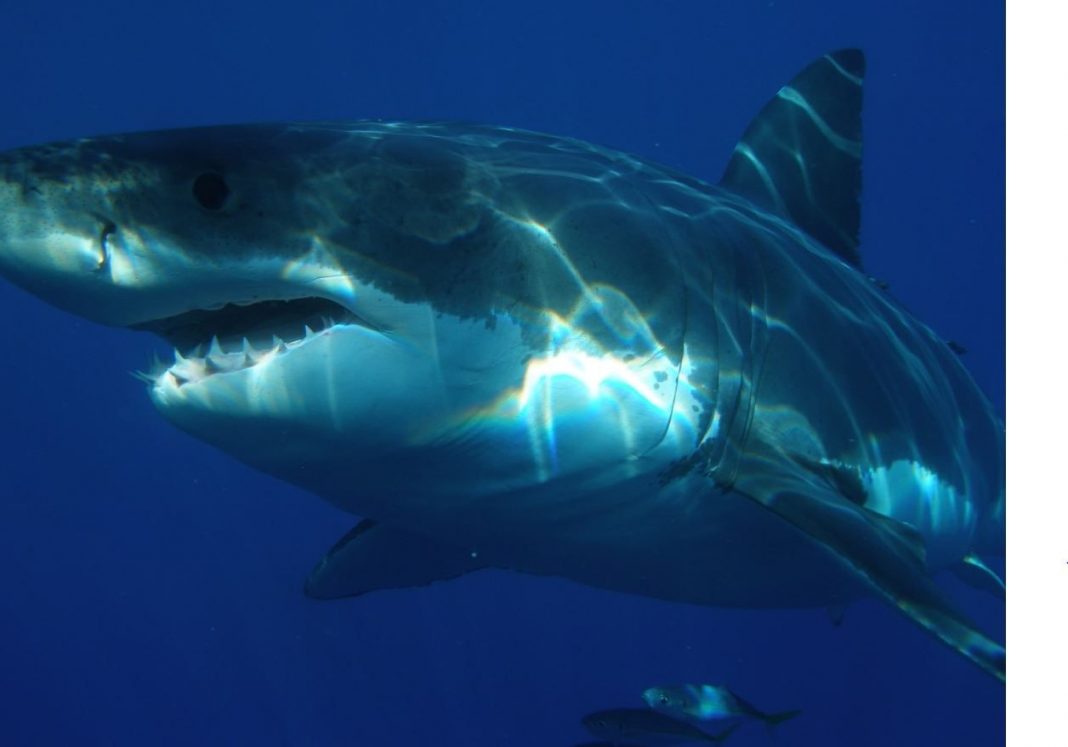Back five million years ago, enormous predatory sharks swam the waters looking for prey. The term “megalodon,” which was given to the creature in 1843 and has now entered common parlance, was derived from the enormous teeth of the creature, which were found in coastal sediments like spent bullets.
In spite of the megatoothed shark’s widespread notoriety, the megalodon’s precise dimensions and form have been a source of debate for a very long time. Because shark skeletons are composed of cartilage for the most part, they do not fossilise very often. This leaves researchers with no choice but to make estimates, which can range anywhere from 35 to 60 feet, based on shed teeth and comparisons with living relatives such as mackerel sharks and the great white.
However, a new model of the shark that was created in three dimensions and published on Wednesday in the journal Science Advances reveals that the megalodon may have been far bigger, more swift, and had a wider range than was previously believed.
Catalina Pimiento, a palaeontologist working at Swansea University in Wales, and John Hutchinson, an anatomist working at the Royal Veterinary College in London, came into contact with one another in the year 2014. Dr. Hutchinson’s area of expertise is in the use of computer modelling for the study of extinct species. The two later became members of a group of people that worked together to build a three-dimensional computer model of a megalodon. The model was based in part on scans of a preserved spine that was found in the 1860s and is now kept at the Royal Belgian Institute of Natural Sciences. In addition to that, they made use of megalodon teeth and performed a full-body scan on a great white shark, which is the closest living relative of the megalodon.
The final model predicted an animal that was almost as massive as a whale shark, measuring 52 feet in length and weighing 67 tonnes. There are additional preserved vertebrae that are 50 percent bigger than those used in the model, indicating a maximum length of 65 feet, which is longer than a current humpback whale. According to Dr. Pimiento, it is likely that other megalodons were much larger than this one. The jaws of the model megalodon might expand wide enough to swallow an orca measuring 26 feet in length in as little as five bites.
This is accurate, particularly when one considers the natural differences in size that exist across different species of animals.
However, a number of experts have pointed out that the model is based on assumptions about megalodons that have not been verified by the fossil record.
If the team’s model is right, however, it has consequences about the cruising speed and appetite of the giant predators. Cruising speed refers to the pace at which an animal moves from one location to another. According to Dr. Pimiento, the researchers discovered that megalodons were capable of reaching a cruising speed of more than three miles per hour. This is much quicker than the average speed of the other 33 species of sharks that were examined. The salmon shark is the species of shark that can achieve speeds of up to two miles per hour, making it the species with the fastest cruising speed overall.
The study reasoned that given the fact that the slower great white shark is able to travel about 7,000 miles without stopping in order to take advantage of seasonal food, the megalodon likely could have gone much farther. In point of fact, it would have been unable to sustain its own nutrition without doing so.
According to Dr. Hutchinson, big migratory animals play a significant role in the circulation of nutrients throughout the globe in current ecosystems. These nutrients may be found in the excrement or the corpses of migratory animals. Tens of millions of years ago, when sea levels were quite a deal higher than they are at the current time, the megalodon most likely had a function in ocean ecosystems that was comparable to the one that it does now as a transoceanic superpredator.
A concurrent extinction event caused a drop in the number of huge prey, which most likely forced the megalodon into direct conflict with smaller sharks like the great white. Around three million years ago, the last of the gigantic predators vanished from the earth.
The team’s model consequently shows that the megalodon was not only physically larger than was previously supposed; it also most likely played a larger role in ocean systems, too, leaving such systems poorer despite the fact that they are safer after its departure.

